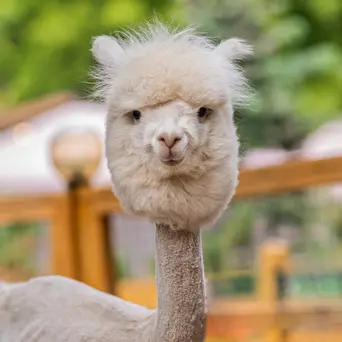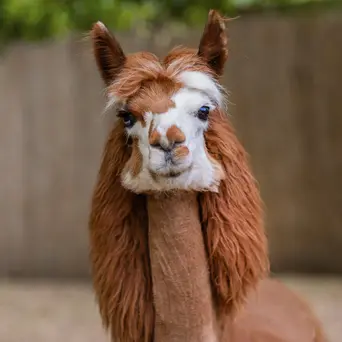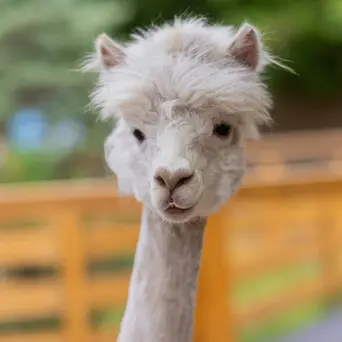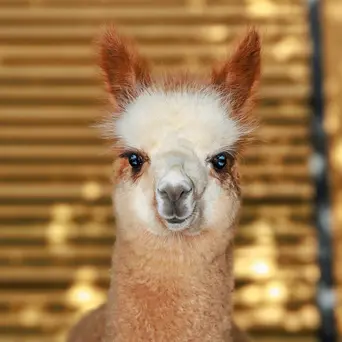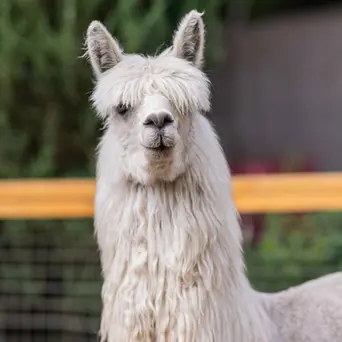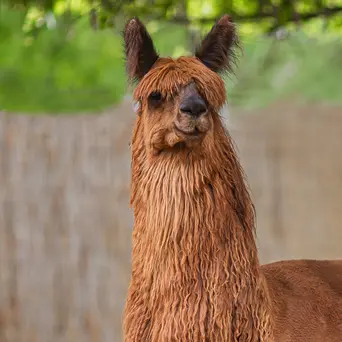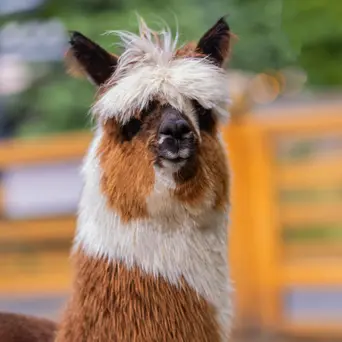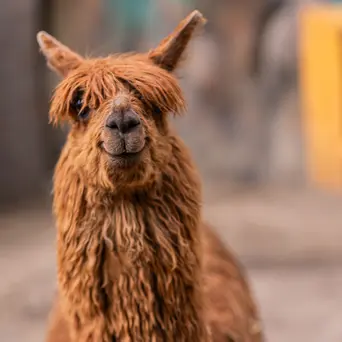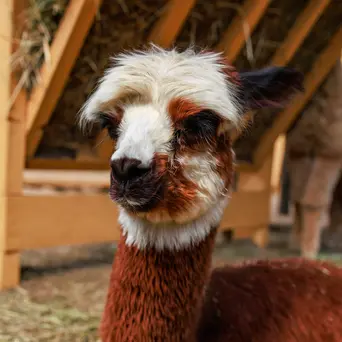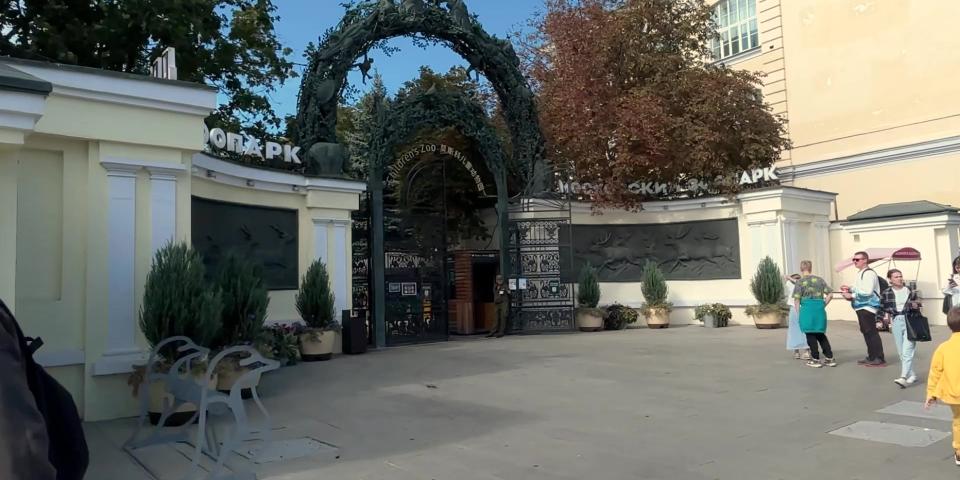


At the exhibition in the Moscow Zoo (new territory)
Daphne
Daphne is the most “family” and caring girl Alpak.
Daphne madly loves her neighbors on the site, always monitors each of the friends: whether everything was in place, whether they all ate, drank whether everyone went to bed and whether they got up to charge in the morning.
Daphne is very sociable, often makes sounds characteristic of alpak and shows the same that its mood.
Birthday: 14.06.2017
Johnny
Johnny is a very curious alpak, gentle, kind and contact.Mom is Casablanca.
We call it a “white dandelion” because of his cute hairstyle with protruding hairs in different directions.
You will always see a smile on his face.
Birthday: 17.08.2023
Butumus
Butumus has multi -colored eyes: left brown, right blue.
Due to its unusual color, we gently call it a "giraffe".
By nature, he is a good -natured, very peaceful and calm alpaca.
He is the largest in size among our wards.
Easily finds a tongue with all the alpacians living next to him.
Birthday: 08.07.2015
Casablanca
Casablanca is the youngest and most tender Alpaca of our park.
Casablanca has snow -white hair and kind eyes, she is very trusting and friendly.Kasya is not conflict and prefers to be friends, and if she does not like something, she will just leave without giving a look.
And also, Casablanca became a young mother and gave birth to a baby Johnny, Kasya from his very birth surrounded him with care and love, raising his tenderness, kindness and peace in him ... and you know?She succeeded!)
Birthday: 22.06.2018
Disentra
Disentra - Suri Alpaca with blue eyes like the sky.
Very beautiful and contact girl.The only dull alpaca in our park.In 2023 she gave birth to a handsome brownie.Polite, sweet and courteous ladies.Loves walks with people and feels quite comfortable on them.
Birthday: 16.06.2017
Karex
Karex has a pronounced character: he knows how to be tender and affectionate, cheerful and “not in mood”, serious and even a little formidable.
Also, he is not ready to divide the territory with other alpacians alpha -samers, rarely lets other boys, with the exception of his best friend - Butumus.
Birthday: 20.06.2016
Brownie
Brownie is very playful, loves to run and frolic, starting everyone around.
Bold, friendly and independent alpaca.
The unusual color was inherited from his grandmother.
Birthday: 20.07.2023
Karlina
Karlina is the most important among girls.All her friends feel behind her like a stone wall.Her distinguishing feature is courage, and life credo - forward, forward and only forward!Only Karlina is the very first to take a treat from the guests of the park, she is the very first eaten breakfast and dinner, and the rest of the girls are respectful to her respectfully.
Birthday: 22.06.2016
Ellie
Active and independent girl, sori breeds, color in her grandmother and is identical with the color of Brownie.He loves to run around the aviary and frolic with his older friends.He studies with curiosity the world and people, often communicates through the fence with his older brother Brownie.Mom - Disentra, dad - Blackki.
Birthday: 12.05.2025
Exposition «Alpaca Park» contact
You can

Enter the enclosure

Feed the alpaca

Take memorable photos

Learn interesting facts from the life of alpacas
Photos
Prices and opening hours
- Please note that access to us is only possible if you purchase a ticket to the Moscow Zoo and then pay additionally for admission to our exhibition. You can find prices and benefits for entering the Moscow Zoo here
- Children under 12 years old are allowed to enter only if accompanied by an adult (over 18 years old)
- Children from 0-4 years old have free admission
- If it seems that there is not enough food in the cup..
- Food for alpacas is not their main diet, it is like a dessert/treat, and too many treats are not good for alpacas.
- We provide the opportunity to feed animals, but also take care of their health.
- Hope for your understanding
How to get there
Alpaca Park is located on the new territory of the Moscow Zoo
(Moscow, Bolshaya Gruzinskaya st. 8, building 36)



